No harmful microorganisms must be found in powdered products for food safety. Powder sterilization machines play a crucial role by effectively destroying pathogens while ensuring the food remains safe and unaltered. This blog post explores the different kinds of powder sterilization machines available today, outlining their characteristics, benefits, and factors to consider when purchasing them. Understanding how these apparatuses work and achieve effectiveness can help readers make wise decisions in managing healthy food security demands.
How Does Food Powder Sterilization Work?
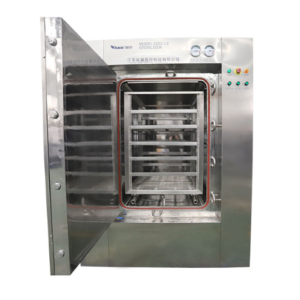
Image source: https://www.amautoclave.com/
Sterilization for food powders employs several measures to kill bacteria that can compromise food safety. Notably, heat treatment involves using high temperatures to eliminate pathogens, whereas chemical sterilization applies selected agents for removing pollutants. Irradiation entails exposing food to ionizing radiation, thus killing bacteria and spores in it. All these methods aim to keep all nutrients and quality intact while achieving the necessary sterility of powders. By comprehending these processes, a producer can choose which sterilization method best fits their product requirements.
What is the sterilization process for powder?
The sterilization of powder typically involves several vital stages to ensure that the final product is free from detrimental microorganisms. First, powders are pre-sterilized through heat treatment, which subjects them to high temperatures to kill pathogenic organisms. The cooling process follows this to preserve the quality of the powders. Chemical techniques can also be used, including adding sterilizing agents into the powder or applying them through fumigation. Additionally, some processes use filtration, whereby the powder passes through a filter that captures impurities. Finally, the powders are sometimes packed in sterile packages to keep their sterility intact until they reach consumers at home or anywhere where they will be consumed. Every one of these steps is tightly controlled for maximum effectiveness while maintaining nutritional and sensory characteristics.
Why is powder sterilization important for food safety?
Food safety relies on sterilizing powder because it eliminates pathogenic microorganisms that might lead to foodborne diseases. According to health recommendations, removing pathogens from powdered foodstuff is essential in preventing Salmonella and E.coli outbreaks, among others. Equally important, sterilization prolongs the shelf-life of powdered goods, ensuring quality and safety over time. It helps maintain nutritional value while reassuring customers that their products are safe and meet all standards for edible products. Ultimately strict hygiene measures are necessary for public health reasons and guaranteeing food supply chain security.
What methods are used to sterilize food powder?
Methods for food powder sterilization entail heat treatment, chemical sterilization, and filtration. Heat treatment, such as pasteurizing, entails exposing the powders to high temperatures to kill pathogens effectively. Chemical methods, on the other hand, involve the application of hydrogen peroxide or ozone through fumigation or by mixing it with powder like a sterilizing agent. Filtration eliminates impurities by passing the powder through special filters that trap microorganisms. In addition, ultraviolet (UV) light is gaining popularity because it kills bacteria and viruses without chemicals. All methods are customized to guarantee the security, quality, and nutrition of food products in powders.
What Are the Types of Sterilization Machines for Powder?
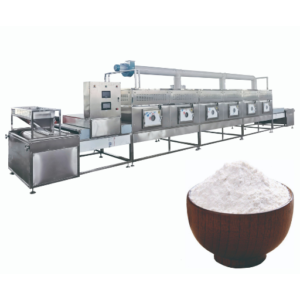
Some types of sterilizers have been designed explicitly for powdered foodstuffs.
- Autoclaves: These employ steam under pressure and high temperature for sterilization, thereby killing microorganisms contained in powdered substances.
- Batch Sterilizers: Such systems make it possible to sterilize large amounts of powders in one cycle, using mostly processes that involve heat treatment.
- Continuous Sterilizers: They are ideal for large-scale production where efficiency is essential, and they keep on sterilizing powders
- Chemical Sterilizers: Machines like these do not need heat but explosives, e.g., hydrogen peroxide or ozone, that may be used as agents, hence treating powders
- UV Sterilization Units: These types depend on ultraviolet light, which disables living organisms within a power material, hence saving them from exposure to pathogenic chemicals
Each type of machine is chosen depending on factors such as powder type, desired level of sterility, and production scale.
How does a steam sterilizer work for powders?
The function of a steam sterilizer is to reach sterility through pressurized steam. In the first step, the powder is put into a chamber in which the steam permeates with particles. This temperature should be high enough to kill organisms and allow even heat distribution in powder and other substances; usually, it does not go below 250°F (121°C). The time for this process varies from 15-30 minutes depending on the specific needs and type of powder being sterilized. Furthermore, these machines may have safety features that can monitor pressure and temperature to ensure consistent results while preventing contamination effectively. The steam used during sterilization is later vented out, thus maintaining the integrity and quality of the powdered product. The method has an advantage because it efficiently kills a wide range of pathogens without affecting the nutritional components of a powder.
What is microwave sterilization?
Microwave sterilization is a technique that employs microwave energy to warm up and eliminate microorganisms from powders, among others. For this reason, just vitalizing the water molecules within it causes the substance to boil, essentially burning away all germs in such products. Contrastingly, conventional techniques take longer before achieving higher temperatures, while cycles usually run between seconds and several minutes. It also preserves thermally labile ingredients, making it suitable for food and drug industry applications. Even microwave technology has ensured unvarying heating that reduces the occurrence of burns or degradation in case something goes wrong with such things during treatment.
Is radiation sterilization effective for powder?
It can be observed that radiation sterilization is the most effective method for sterilizing powders, mainly in the food and pharmaceutical industries. This technique uses ionizing radiation like gamma rays, electron beams, or x-rays to eliminate harmful microorganisms without significantly raising the temperature of the product. As research has shown, the use of radiation as a sterilizing agent has successfully achieved high levels of microbial load reduction while maintaining intactness and characteristics of heat-sensitive powders. Another advantage of radiation sterilization is that it reaches all areas, such as deep parts when applied to powdered products. However, manufacturers must provide adequate doses as well as adhere to safety guidelines, making it possible to increase effectiveness and preserve quality.
How to Choose the Ideal Powder Sterilization Machine?
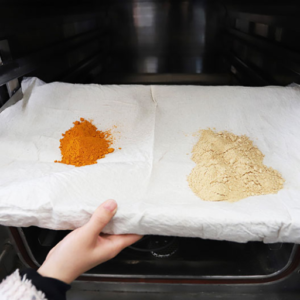
Some factors influencing one’s choice of a powder sterilization machine are discussed below. A good starting point would be to evaluate what form of sterilization option you want; either microwave, radiant energy approach, or traditional thermal process will depend on the specific application and physical nature of those powders. Furthermore, it would be prudent to ensure they have a capacity corresponding to your company’s operational requirements and production volume. If features such as uniform heating properties exist, a machine might meet all industry standards regarding safety controls, among others. On top of these, other issues come in handy when considering customer support services by the manufacturer through technical assistance availability along with ease of operational suitability on user-friendliness plus maintenance demands may also vary significantly upon different component types used during the manufacturing process, making it necessary consider them too; this way you can decide after reviewing comments made by clients who had already given their feedback about different machines depending on ratings received from customers surveys over time thereby getting enough information before final decision making is done or not, e.g., according some feedbacks received earlier.
What factors should be considered before buying a powder sterilizer?
Several factors of great importance should be considered when choosing a powder sterilizer:
- The Method of Sterilization: Familiarize yourself with various sterilizing methods, such as radiation, steam, or microwave. Each method has advantages and disadvantages in terms of efficiency, energy consumption, and suitability for different powders.
- Material Compatibility: Make sure that the sterilizer is friendly to the powders under question in terms of the materials they are made from. Ask yourself whether heat-sensitive components can be treated without damaging their quality and properties.
- Efficiency and Performance: How quickly and uniformly such equipment will sterilize must be assessed. Look up microbial reduction rates and overall performance in real-world applications.
- Capacity and Scalability: How much powder needs processing? A sterilizer that can meet current production requirements while also being expandable for future growth must be selected.
- Safety Features: Safety comes first. What safety features does the machine have, such as emergency shut-off devices or protective measures to avoid operator exposure to hazardous conditions?
- Regulatory Compliance: Ensure that the food or pharmaceutical powders processing machine meets relevant industry standards as well as regulatory requirement
- Maintenance and Support: What are the maintenance requirements for this disinfection device? Does the manufacturer provide technical support? In the long run, an easier-to-maintain machine saves time and costs.
-
Cost and Budget: Finally, consider how it fits within your budget. Some things to consider are initial expenses, operational costs, and possible labor-saving benefits or enhanced efficiencies you may realize over time.
Which suppliers offer the best sterilizing equipment?
- STERIS Corporation: This well-known company provides an extensive range of sterilization solutions. In this sector, they have used cutting-edge technology in hospitals and industries. They are known to be reliable and effective enough to meet regulatory standards.
- Getinge Group: Getinge allows all firms that need their services to have advanced sterilization solutions, thus allowing them to serve different industries, including hospitals and laboratories. These machines are supported by intensive maintenance, ensuring high-performance levels and operational safety.
- Andersen Products: The business deals with different methods of sterilization, hence customizing its products accordingly to suit particular situations. They have, therefore, become one of the most preferred choices among companies when seeking effective tools for this particular purpose due to their great customer service and excellent quality.
These suppliers have reputable technologies and also emphasize safety measures and effectiveness during the processing of sterile substances.
How does an autoclave steam sterilizer compare to other sterilizers?
That’s why autoclave steam sterilizers stand out among other methods. They use hot steam under high pressure to destroy bacteria effectively. Comparatively, gas sterilizers or dry heat ones like autoclaves possess some critical benefits over them.
- Efficiency: In the medical field or any laboratory setting where such services are needed, autoclaves prove to be much faster than gas or dry heat, requiring fewer air breaks between cycles to minimize downtime.
- Effectiveness: Steam has moisture, which goes through materials better than other gases, making even porous surfaces completely sterile, unlike dry heat.
- Safety and Environmental Impact: On the contrary, gases used in these devices can form toxic residues that must be disposed of separately from regular trash, while water-driven appliances employ electrical energy instead, thus being safe for your health and the environment.
On the whole, autoclave steam sterilizers are more likely to be used in most cases, although every sterilization method has a specific niche where it is best suited; they are fast, easy to rely on, and thoroughly eliminate all microorganisms.
How to Operate and Maintain Sterilization Equipment?
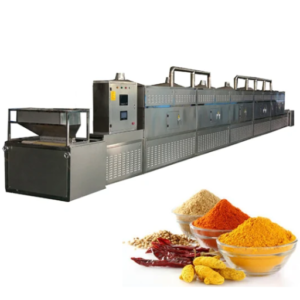
Operating and maintaining sterilization equipment, such as autoclaves, requires certain procedures crucial for effectiveness and safety.
- Preparation: To ensure the equipment is free of dirt and debris, load items correctly so that steam can move freely around all surfaces. Use appropriate packaging materials for instruments.
- Setting Parameters: Before starting a cycle, read the manufacturer’s manual on temperature, pressure settings, and the item being sterilized.
- Monitoring: Check gauges and indicators of the equipment periodically through the cycle to ascertain that it complies with sterilizing conditions.
- Post-Use Care: After the cycle is completed, allow at least 20 minutes for cooling before unloading the items. It is important to inspect the items and their packaging for integrity so that they remain sterile.
- Routine Maintenance: Plan routine maintenance checks and calibration of your machine to prevent failure. If some parts have worn out or are damaged, replace them. Follow the manufacturer’s recommendations regarding servicing to maintain optimal functionality of the machine throughout its lifespan.
- Documentation: This is essential for tracing any issues or problems encountered during maintenance activities or subsequent variations in performance from one cycle to another.
By doing this, operators will ensure optimum utilization of their sterilizing machinery over a long period while still getting satisfactory results from safe sterilization operations.
What are the maintenance requirements for a powder sterilization machine?
Many vital components need attention when keeping a powder sterilizer operational at peak working performance and in a safe condition. The chamber and components must be cleaned regularly so as not only to avoid contamination but also to facilitate efficient functioning. For instance, operators should check seals and gaskets for wear before opting for replacement since leaks can interfere with sterility effectiveness. Besides, regular temperature and pressure setting calibration must be performed in line with specifications provided by manufacturers’ instructions. Furthermore, keeping records on all service visits, such as inspections or repairs affected during preventive maintenance, is critical for compliance and quality control. It is also important to train operators consistently on how to handle and keep the machine so that it will last longer.
How do you ensure the machinery works efficiently?
To make sure machinery works efficiently, consider the following approaches:
- Routine check-ups: Introduce a timetable for regular inspections to discern likely problems before they cause machine breakdowns. This covers verifying fluid levels, checking drives, and inspecting connections.
- Right oiling: Make sure that all moving sections have adequate lubrication per the manufacturer’s manual. This reduces frictional forces and wear, ensuring that machines operate smoothly for a long time.
- Train the workers how to use them best: Teach the people manning these machines how they should adequately operate them and observe the safety standards. Well-trained employees are essential in reducing errors and maintaining high operational efficiency.
- Performance monitoring: Use relevant tools or software to monitor machine output daily and identify any possible deviation from the standard. This earlier identification will facilitate making necessary adjustments, thus avoiding possible costly future problems.
These tips help operators improve machine efficiency while reducing downtime and increasing productivity.
What safety measures are necessary while using a sterilizer machine?
When working with a sterilizer, some precautions need to be adhered to ensure the staff’s safety as well as make sure that it achieves its main objective-sterilization:
- Personal Protective Equipment (PPE): Operators should wear appropriate protective gear, such as gloves, goggles, and coats, to avoid being exposed to chemicals and heat while doing their work.
- Training and Familiarization: It is essential that all operators receive comprehensive training on the specific sterilizer model. Understanding how to use directions in operation manuals and emergencies can help maintain safety measures.
- Regular Maintenance and Safety Checks: Conduct regular maintenance and safety checks on the sterilizer machine to identify any issues that could cause malfunctioning. This entails inspecting door seals, valves, pressure gauges, etc.
- Proper Loading Technique: Observe correct loading guidelines for instruments inside the sterilizer. Putting too many items inside could hinder steam from passing through well, failing in its disinfection role.
- Monitoring Operational Parameters: It is also vital to continuously monitor parameters such as temperature, pressure, or time during the sterilization cycle so that they don’t exceed or fall below certain values.
- Emergency Procedures: Plans for dealing with accidents or equipment malfunctions should include knowing, releasing pressure safely, and evacuating if necessary.
Implementing these safety measures will greatly reduce the risks associated with using a sterilizer machine, thus creating a safer working environment.
What Are the Benefits of Using Herbal Powder Sterilization?
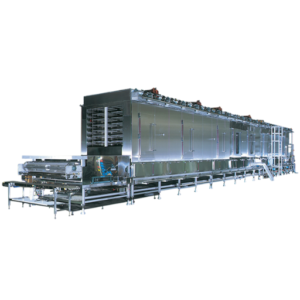
There are good reasons why herbal powder sterilization has been employed in several applications. Firstly, it involves using plants with antimicrobial properties, such as natural botanicals, destroying germs instead of using harmful chemicals, making it a safer option for users and the environment. In addition, it preserves materials that may be delicate and damaged by typical methods of sterilizing, such as high temperatures and chemical solid elements. Moreover, herbal powders often leave no or little residues, hence cutting down on massive washing before its use, thereby reducing preparation time. In summary, there is better operational efficiency when adopting herbal powder sterilization and promoting more natural sterilization processes.
How does sterilization improve the shelf life of spice and herb powders?
It is important to note that spices and herb powders can quickly lose flavor if not correctly stored. These include using dry heat, steam, or even the method of sterilizing herbal powder, among others, inhibiting bacteria from multiplying and retaining the original oils and flavors available in these products, which would otherwise degrade with time. That way, rancidity is avoided; thus, active compounds remain potent enough even after an extended period, so the products are preserved and stay fragrant for long durations. Hence, proper techniques for sterilization go miles towards determining how long spice and herb powders last while still being consumed in their storage life.
Can sterilizers remove all types of bacteria from herbal powders?
Although no sterilization method eliminates all types of bacteria in herbal powders, the most effective sterilizers reduce the microbial load significantly. Such as industry professionals and research findings, traditional techniques such as steam and dry heat can eliminate several pathogens or spoilage organisms, resulting in safer products. Some of these techniques, for example, are good at targeting specific strains of bacteria in herbal powder sterilization without compromising herb quality. However, some tough bacteria or spores may require more sophisticated methods or treatments to ensure adequate reduction. Thus, while sterilizers are highly efficient, it is essential to understand that different bacterial species exist in herbal products.
What are the best practices for herbal powder sterilization?
The following practices guarantee the efficiency of sterilizing herbal powders:
- Herb Pre-Treatment: Before being subjected to any form of sterilization, wash and dry herbs completely to get rid of possible surface contaminants. This stage is critical for reducing the initial microbial load.
- Selection of a Sterilization Method: The right method includes using appropriate methods, such as the correct temperature and duration during steam sterilization or dry heat techniques, for particular herbs and their water contents. Check if the sterilization method is correctly set up so that it will produce optimal results.
- Monitoring and Validation: Test samples from the beginning until after treatment for the presence of microorganisms to frequently monitor whether sterility has been achieved. Microbiological investigation, for example, could be done to prove that selected ways really diminish harmful bacteria.
- Storage Conditions: To protect against recontamination and spoilage, store herbaria powders post-sterilization in sealed, moisture-free containers in cool places. Vacuum sealing or other preservation means can also increase shelf life.
- Hygiene and Safety Protocols: Observe strict hygienic measures during processing, such as wearing gloves when handling materials and sanitizing equipment, to prevent contamination during packaging operations.
Manufacturers should adhere to these best practices to make herbal powders safer, better quality, and longer-lasting.
Frequently Asked Questions (FAQs)
Q: What is the significance of using a powder sterilization machine for food safety?
A: Using a powder sterilization machine ensures the safety and quality of powdery food products by eliminating microorganisms in food. This process helps decontaminate and deactivate pathogenic bacteria to meet food safety standards.
Q: How does a powder sterilization machine achieve high efficiency in sterilization?
A: Most powder sterilization machines achieve high efficiency by adopting superheated steam or pressure steam methods. These techniques can quickly and effectively sterilize powder material, ensuring a higher sterilization effect compared to traditional methods.
Q: What are the advantages of using a dry sterilization method for powdered food?
A: Dry sterilization methods are widely used for powder food because they prevent moisture buildup, which can affect the quality of the product. Using a dry process, the powder material maintains its intended characteristics and is protected from contamination.
Q: Can powder sterilization machines be customized for different powder foods like seasoning powder?
A: Yes, manufacturers can customize powder sterilization machines to meet specific sterilization requirements for different types of powder foods, including seasoning powder and food spice. Customization ensures that the machinery suits various powdery products’ particular properties and needs.
Q: What role does the control system play in powder sterilization machines?
A: The control system in powder sterilization machines automates the drying and sterilization process. It provides precise control over temperature, pressure, and time, ensuring that the powder material is treated uniformly and meets the required safety standards.
Q: How is traceability achieved in the sterilization process?
A: Traceability is achieved through integrated control systems that record and monitor each step of the sterilization process. These systems can log temperature, pressure, and duration data, providing detailed records for quality control and regulatory compliance.
Q: Are there powder sterilization machines that are easy to use and maintain?
A: Many modern powder sterilization machines are designed to be easy to use and maintain. They typically feature user-friendly interfaces, require minimal manual intervention, and are constructed from durable materials like stainless steel to ensure longevity and ease of cleaning.
Q: What is the role of high pressure in sterilizing powder materials?
A: Some powder sterilization techniques use high pressure to enhance the effectiveness of microbial decontamination. The combination of high pressure and controlled temperature can penetrate deeply into the powder material, ensuring thorough sterilization.
Q: Where can I find reliable powder sterilization machinery for food processing?
A: Reliable powder sterilization machinery can be sourced from specialized manufacturers. For further assistance, consider contacting suppliers listed on platforms like alibaba.com or directly contact us for tailored processing solutions and recommendations.












